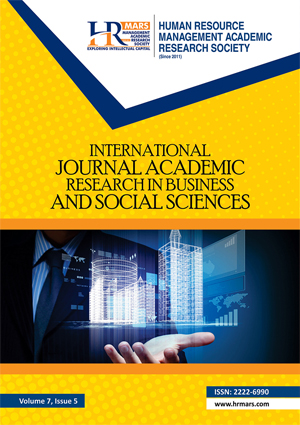
ISSN: 2222-6990
Open access
This research explores the significant transformations in the social lifestyles of Omani women within the context of modernization. The study aims to analyze the impact of modernization on their personalities and lifestyles while highlighting the changes in their fashion and social activities. The primary reference artists for this project are Ranjit Sarkar, Richard Fosu, and Iman Maleki, whose artworks depict women's representation through various elements such as fashion, personality, lifestyle, culture, and tradition. The framework of Cultural Hybridization Theory was employed to contextualize the research project. The research project utilized studio practice research, incorporating critical self-reflection, studio experimentation, and contextual review approaches. The results of this investigation demonstrated that the transformations stemming from cultural and lifestyle evolution have profoundly affected the identities of Omani women. This research endeavor significantly influenced the understanding of modernity and the awareness of the developments and alterations that are pivotal in shaping the lifestyle and cultural identity of modern Omani women. This led to an innovative, comprehensive, and accurate perspective on the artistic representation of modern Omani women and their contributions within the contemporary milieu, which serves to enhance cultural and artistic dialogue and promote diversity in the progression of Omani society.
Aasim, A. (2021, June 11). Omani women’s qualitative efforts in promoting the comprehensive development process. Oman Daily Newspaper. Retrieved July 20, 2022, from https://www.omandaily.om/article/1002050
Al-Abri, F. (2018). Omani women’s empowerment within decades. International Journal of Humanities Social Sciences and Education (IJHSSE), 5(10), 88–112. https://doi.org/10.20431/2349-0381.0510010
Al-Barwani, T. A., & Albeely, T. S. (2007). The Omani family: Strengths and challenges. Marriage & Family Review, 41(1–2), 119–142. https://doi.org/10.1300/J002v41n01_07
Albusaidi, Z. (2010). Omani women’s treasures between tradition and contemporary. Oman Foundation for Press and Publication. Muscat.
Anyanwu, E. C., & Chiana, C. A. (2015). Socio-cultural influences on fashion consumption behavior of university students. ARRUS Journal of Social Sciences and Humanities, 2(1), 47–65.
Bihiku, Z. (2024, August 12). Explore the masters. ArtPal. https://www.artpal.com/Richardfosu5577
Chatty, D. (2000). Women working in Oman: Individual choice and cultural constraints. International Journal of Middle East Studies, 32(2), 241–254.
Corina, L. (2022). A vision of modernity: Narratives of historical (dis)continuity in Oman. Arabian Humanities, 16(II). https://journals.openedition.org/arabianhumanities/8330
Fosu, R. (2024, March 10). Artist portfolio page. ArtPal. https://www.artpal.com/Richardfosu5577
Giddens, A. (2002). Runaway world: How globalization is reshaping our lives. Profile Books.
Jan, N. P. (2004). Globalization and culture: Global mélange. Rowman & Littlefield Publishers.
Liloia, A. (2022, November 22). The role of women in Oman’s social and economic progress. Arab Center Washington DC. https://arabcenterdc.org/resource/the-role-of-women-in-omans-social-and-economic-progress/
Nasser, A.-S. N. (2014). Nonproliferation in the Middle East. In B. Finlay (Ed.), Southern flows: WMD nonproliferation in the developing world (pp. 86–105). Stimson Center. http://www.jstor.org/stable/resrep11012.8
Nelson, K., & Bowen, J. (2000). The effect of employee uniforms on employee satisfaction. Cornell Hotel and Restaurant Administration Quarterly, 41(2), 86–95.
Nrutya, B. (2022, September 22). About Ranjit Sarkar. Painted Rhythm Art Gallery. https://paintedrhythm.com/product/nrutya-series-painting-ranjit-sarkar/
Omezzine, A., Al-Mazrooei, N., & Chomo, G. V. (2003). Purchase behavior of consumers for seafood products. Journal of Agricultural and Marine Sciences, 8(1), 1–10.
Rahma, A. (2010). Omani women between tradition and modernity. Oman Foundation for Press and Publication, Muscat.
Roche, T., Roche, E., & Al Saidi, A. (2014). The dialogic fashioning of women’s dress in the Sultanate of Oman. Journal of Arabian Studies, 4(1), 38–51. https://doi.org/10.1080/21534764.2014.918373
Servaes, J. (2025, March 12). The impact of the digital revolution on culture and communication. IDN-InDepthNews. https://indepthnews.net/the-impact-of-the-digital-revolution-on-culture-and-communication/
Statista. (2025). Media market in Oman – statistics and facts. Retrieved April 11, 2025, from https://www.statista.com/outlook/emo/media/oman
Talei, R. Al. (2023). State feminism in Oman and the promotion of women’s rights. Carnegie Endowment for International Peace. Retrieved October 20, 2023, from https://carnegieendowment.org/sada/2023/03/state-feminism-in-oman-and-the-promotion-of-womens-rights?lang=en
The Arabian Stories. (2024, July 15). Expatriates constitute over 42% of Oman’s population. The Arabian Stories. https://www.thearabianstories.com/2024/07/15/expatriates-constitute-over-42-of-omans-population/
Top 20 cultural hybridization examples & definition. (2024, March 12). BITGLINT. https://www.bitglint.com/top-cultural-hybridization-examples-definition/
Tripathi, S., & Al Shahri, M. (2016). Omani community in the digital age: A study of Omani women using backchannel media to empower themselves for frontline entrepreneurship. International Journal of Information and Communication Engineering, 10(6), 1929–1934.
Obed, A. F., & Sedon, M. F. (2025). Exploring the Social Lifestyle of Omani Women in Modernization through Painting. International Journal of Academic Research in Business and Social Sciences, 15(4), 638–661.
Copyright: © 2025 The Author(s)
Published by HRMARS (www.hrmars.com)
This article is published under the Creative Commons Attribution (CC BY 4.0) license. Anyone may reproduce, distribute, translate and create derivative works of this article (for both commercial and non-commercial purposes), subject to full attribution to the original publication and authors. The full terms of this license may be seen at: http://creativecommons.org/licences/by/4.0/legalcode